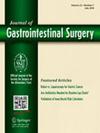Preoperative risk score for 90-day mortality after major liver resection
IF 2.2
3区 医学
Q3 GASTROENTEROLOGY & HEPATOLOGY
引用次数: 0
Abstract
Background
Major liver resection is frequently performed for primary and secondary liver tumors. However, 90-day mortality rates can exceed 10% in high-risk patients. This study aimed to develop a preoperative risk score for postoperative mortality after major liver resection.
Methods
All major liver resections between 2014 and 2019 in 2 Dutch tertiary referral centers were identified. A validation cohort consisted of all consecutive patients who underwent a major liver resection in the nationwide Dutch Hepato Biliary Audit from 2014 to 2020. Multivariate logistic regression was used to identify prognostic factors and develop a mortality risk score.
Results
Major liver resection was performed in 513 patients, of whom 238 (46.4%) had a primary liver cancer, and in 148 patients (28.8%), a hepaticojejunostomy was performed; 90-day mortality occurred in 56 patients (10.8%). Mortality was independently predicted by 5 risk factors: age ≥ 65 years, diabetes mellitus type 2, diagnosis of primary liver cancer, American Society of Anesthesiologists ≥ 3, and extended hemihepatectomy. A risk score with 1 point assigned to each risk factor showed good discrimination (area under the curve [AUC], 0.77; 95% CI, 0.71–0.83). The predicted 90-day mortality was 3.5% for low-risk (0 or 1 points; 53.8% of all patients), 11.1% for intermediate-risk (2 points; 25.3%), and 29.7% for high-risk patients (3–5 points; 20.9%). External validation in the nationwide cohort with 1617 patients showed similar concordance (AUC, 0.69; 95% CI, 0.64–0.75).
Conclusion
The proposed and validated risk score can aid in shared decision making.
肝大切除术后90天死亡率的术前风险评分
背景:对于原发性和继发性肝脏肿瘤,经常进行肝脏大切除术。然而,在高危患者中,90天死亡率可超过10%。本研究旨在建立大肝切除术后死亡率的术前风险评分。方法对2014 - 2019年荷兰2家三级转诊中心的所有主要肝脏切除术进行分析。验证队列包括2014年至2020年在荷兰全国肝胆道审计中接受大肝切除术的所有连续患者。多变量逻辑回归用于确定预后因素并制定死亡风险评分。结果513例患者行大肝切除术,其中238例(46.4%)为原发性肝癌,148例(28.8%)行肝空肠吻合术;90天死亡56例(10.8%)。死亡率由5个危险因素独立预测:年龄≥65岁、糖尿病2型、原发性肝癌诊断、美国麻醉医师学会≥3级、扩展半肝切除术。每个危险因素1分的风险评分显示出良好的辨别能力(曲线下面积[AUC], 0.77;95% ci, 0.71-0.83)。低危组(0或1分)的90天死亡率预测为3.5%;53.8%), 11.1%为中危(2分;25.3%),高危患者29.7%(3-5分;20.9%)。在包含1617例患者的全国队列中进行的外部验证显示出类似的一致性(AUC, 0.69;95% ci, 0.64-0.75)。结论提出并验证的风险评分有助于共同决策。
本文章由计算机程序翻译,如有差异,请以英文原文为准。
求助全文
约1分钟内获得全文
求助全文
来源期刊
CiteScore
5.50
自引率
3.10%
发文量
319
审稿时长
2 months
期刊介绍:
The Journal of Gastrointestinal Surgery is a scholarly, peer-reviewed journal that updates the surgeon on the latest developments in gastrointestinal surgery. The journal includes original articles on surgery of the digestive tract; gastrointestinal images; "How I Do It" articles, subject reviews, book reports, editorial columns, the SSAT Presidential Address, articles by a guest orator, symposia, letters, results of conferences and more. This is the official publication of the Society for Surgery of the Alimentary Tract. The journal functions as an outstanding forum for continuing education in surgery and diseases of the gastrointestinal tract.

 求助内容:
求助内容: 应助结果提醒方式:
应助结果提醒方式:


